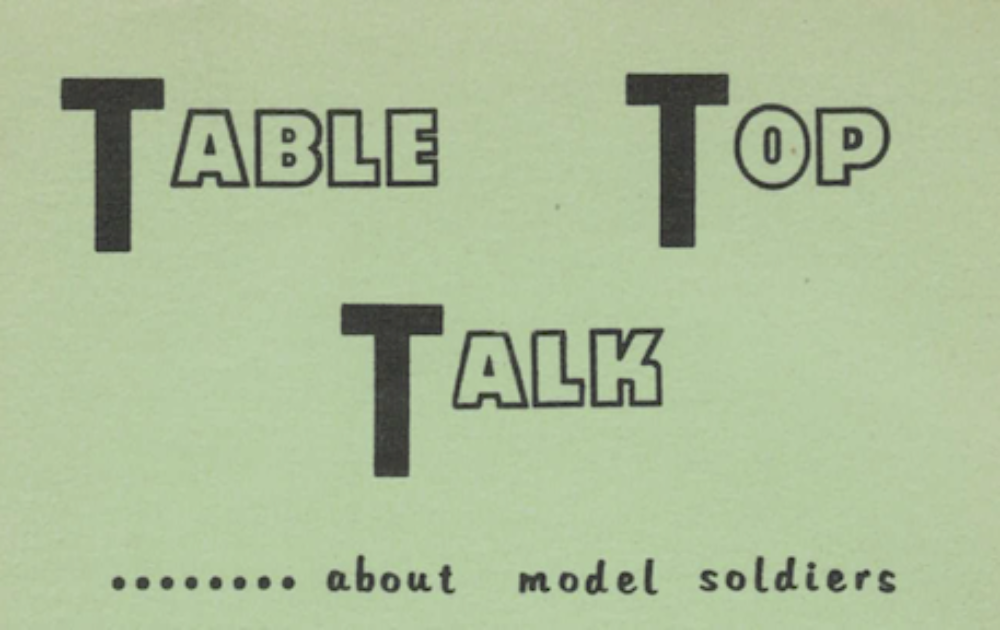III. SEQUENCE OF ACTION
Which side moves first is determined by whoever sets up the particular battle situation to be played. With this decided this side, which we’ll call Side A, proceeds as follows:
All of Side A’s artillery units except those firing cannister may fire at any enemy units within their range that are not completely protected by intervening hills, woods, buildings, etc.
All of Side A’s other units may now fire at any enemy units within their range that are not completely protected by intervening hills, woods, buildings, etc.
Side A may now move any of his units he wishes, checking morale as necessary.
Side B conducts defensive fire at charging units. They may also fire at any units of Side A which have passed thru the field of fire of any of Side B’s units.
Any hand-to-hand combat (melee) brought about by Side A’s movement are resolved, checking morale as necessary.
These five steps are now repeated with Side “B” firing and moving and Side “A” conducting defensive and pass-thru fire.
Note the following: Each side fires first, then moves.
Units which conduct defensive or pass-thru fire in step 4 cannot, fire again in their following step 1 or 2.
Any given unit may both fire and move in the same turn. There is no movement penalty for having fired. Except that British Rifle units can either fire or move in a given turn, but may not do both in the same turn.
RANDOM MOVEMENT is a system designed especially for games requiring a small number of players to handle a very large number of units.
The units of each side should be grouped into regiments (all cavalry, Napoleonic infantry), or brigades (Civil War and British Napoleonic infantry) or higher units (brigades/divisions), depending on the numbers involved. Artillery can be grouped into batteries or higher units (battalions/regiments/brigades), depending on the numbers involved.
Indicate the make-up of each such higher unit on a 3″x5″ card, and place all the cards from both sides together in a box.
Side A draws one card (without looking). The units on that card (whichever side they belong to) — and only those units – may fire and move in the normal manner.
The side that did not move now draws a second card — note: there is no way of knowing whether a side will draw a card for its own units or for its opponents. That’s the breaks!
RATIONALE: This system accomplishes the following:
Keeps one side from having to wait a long time while the other side moves all of a great number of units with a few hands.
Simulates the inability of higher commanders to coordinate the actions of all units in a large battle. in the absence of actual subordinate commanders.
Provides extra excitement and suspense. For instance: When a breakthrough is made, which will be drawn first, the defender’s reserves to plug the hole, or the attacker’s to exploit it? (Thus will both sides be realistically motivated to keep adequate reserves on hand)
EFFECT: It becomes even more important, with this, system, to use the status markers (see VIII. D.). A unit might be “Shaken” by the fire of one enemy unit and then, before its own card has been, drawn. “Stopped” by the fire of another enemy unit. As with the normal sequence, a unit effected twice in the same turn suffers the next worse effect. In this case “Shaken” + “Stop” = “Retreat”. There is now also the possibility that a unit that has already been forced to Retreat or Rout — before its own card is drawn -is Stopped or Shaken by the fire of another enemy unit. Since “Stopping” a unit that already can’t move a tall next turn has no real effect, again the effect must be changed to that which is next worse than the unit’s current status. Therefore status markers will be needed to indicate units that have been “Retreated” and that have been “Routed” (instead of just “Moved”). Effects are listed below from bad to worst (“Engaged” units cannot be fired upon) :
STOP
SHAKEN
RETREAT
LOSE
ROUTE
